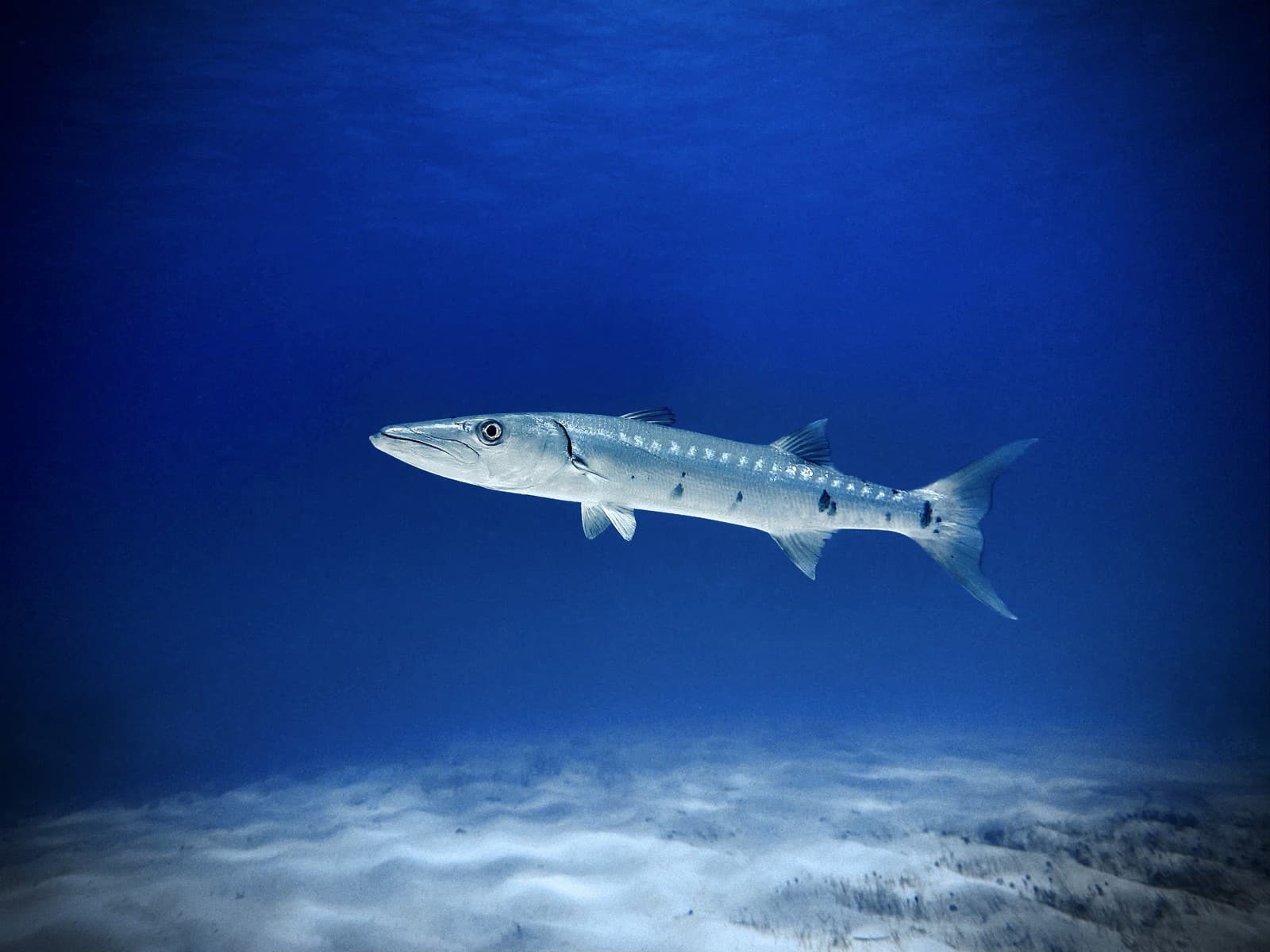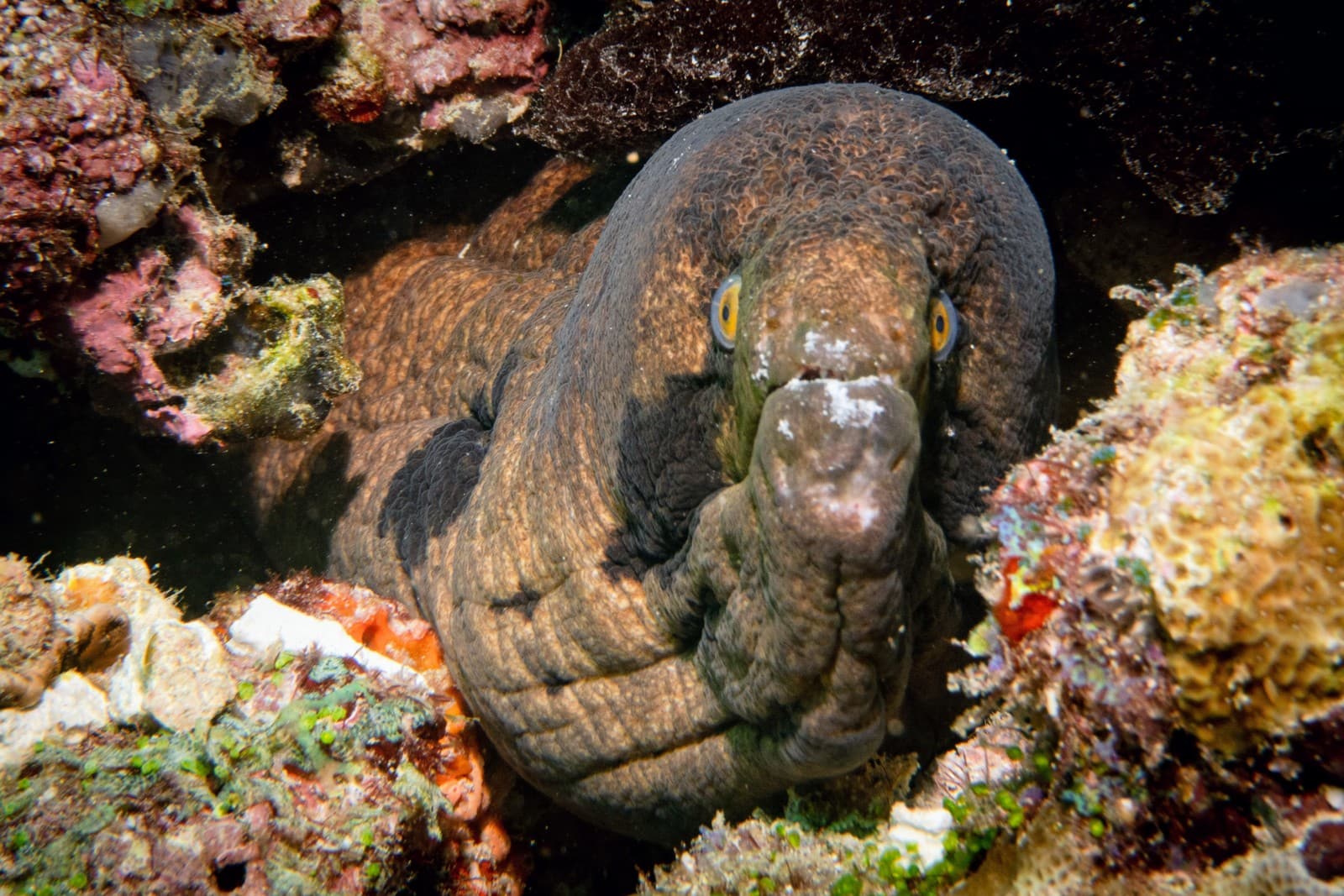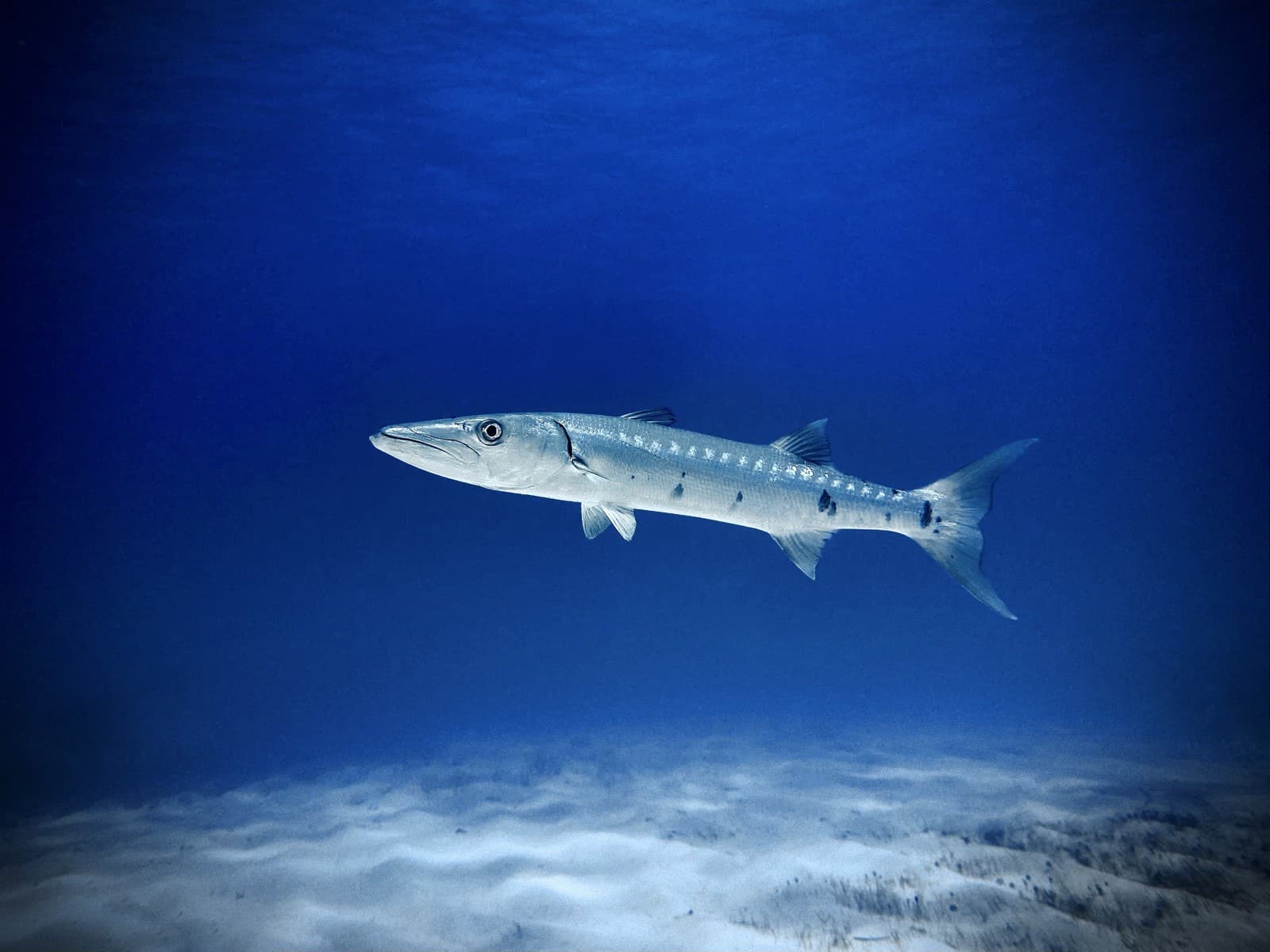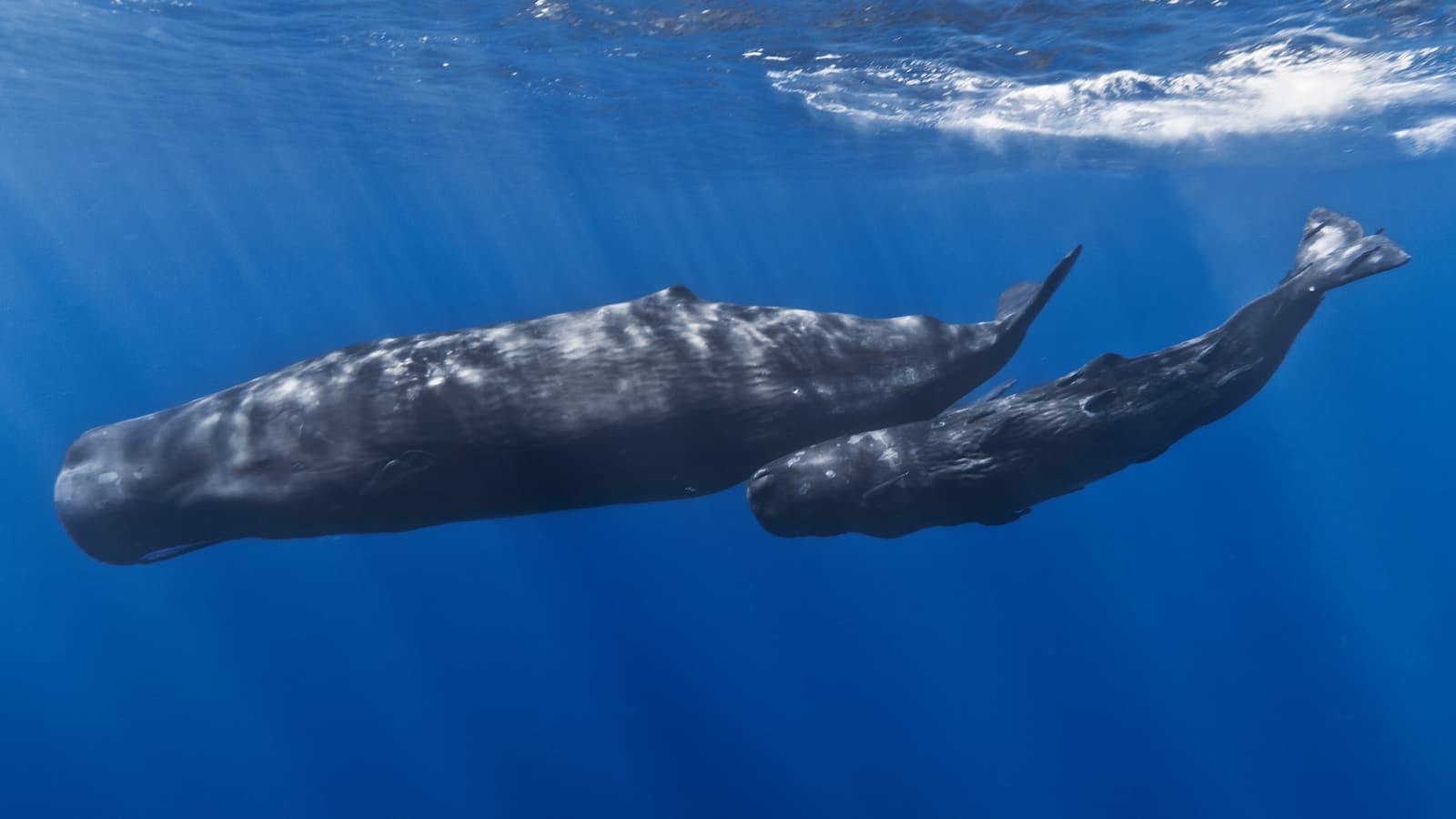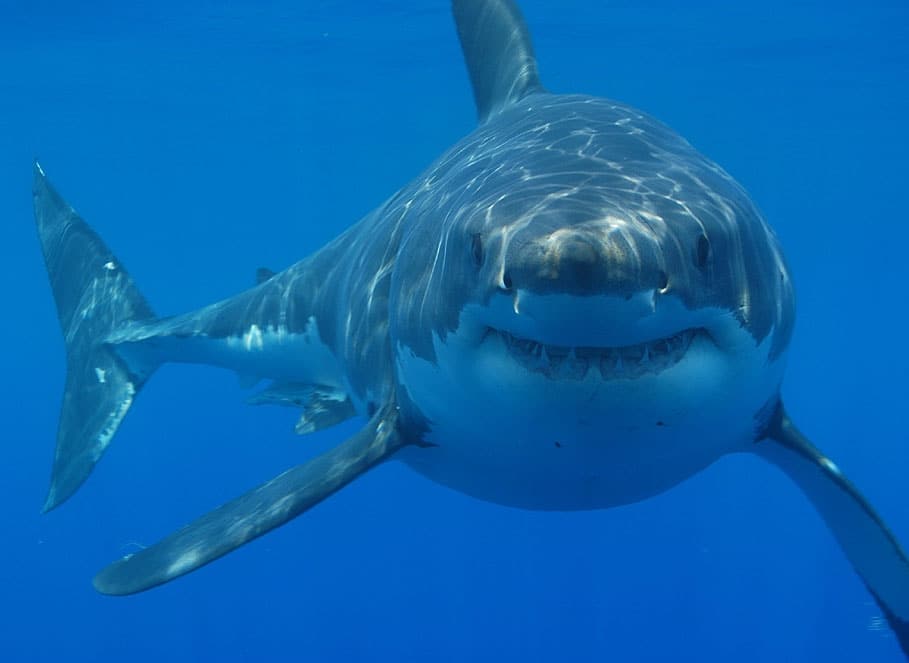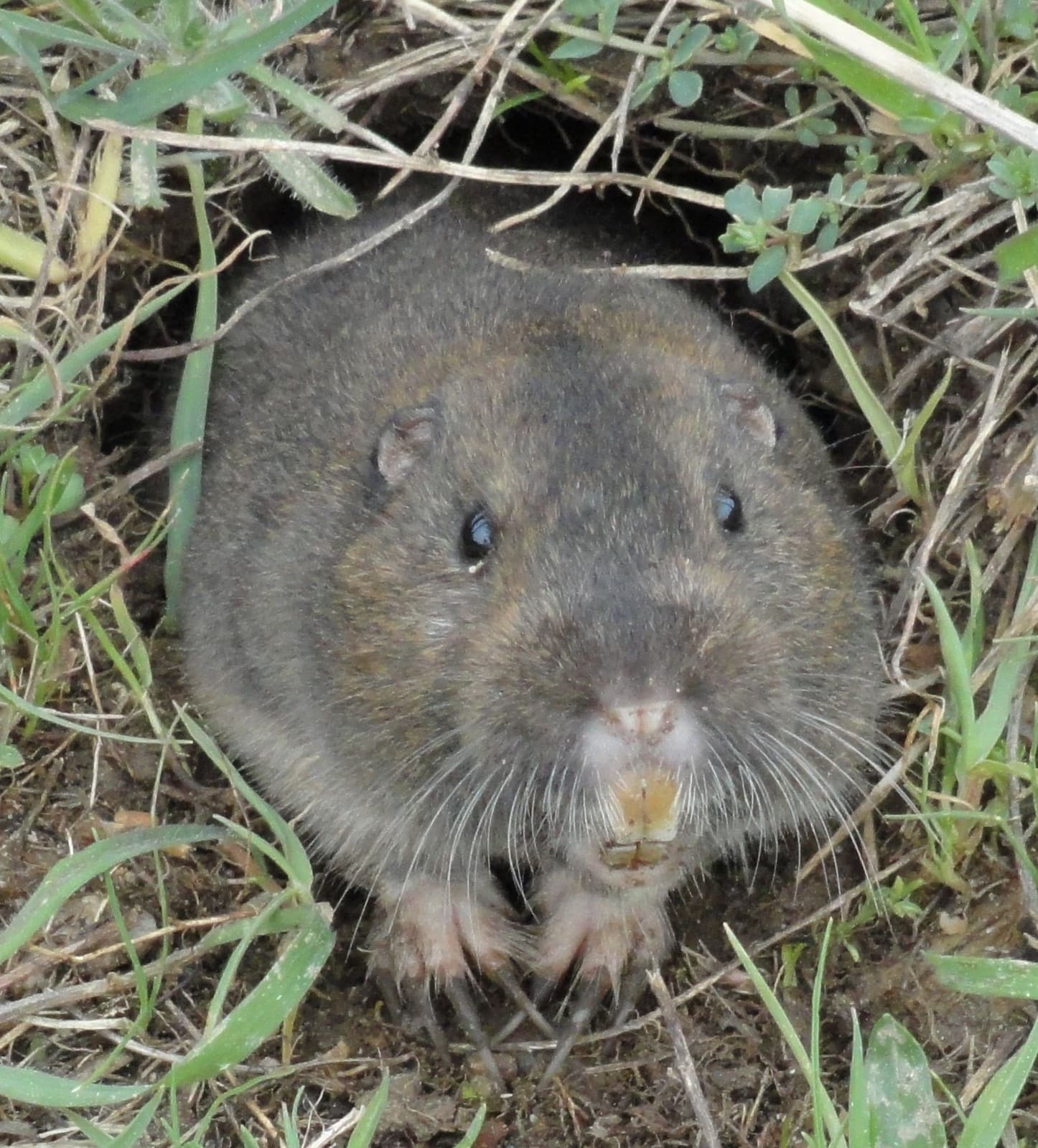Barracuda vs Shark: A Complete Comparison
When comparing barracuda vs shark, we’re examining two of the ocean’s most efficient predators, though they differ significantly in size, hunting tactics, and evolutionary history. While the largest great barracuda reaches 6.5 feet (2 meters) in length, many shark species dwarf them, with great whites growing up to 20 feet (6 meters). Both are apex predators in their respective habitats, but their hunting strategies and anatomical features set them distinctly apart.
These remarkable marine hunters have evolved along separate paths, with sharks existing for over 450 million years compared to barracuda’s relatively recent 50 million-year history. This evolutionary gap has resulted in fundamental differences in everything from skeletal structure to sensory capabilities.
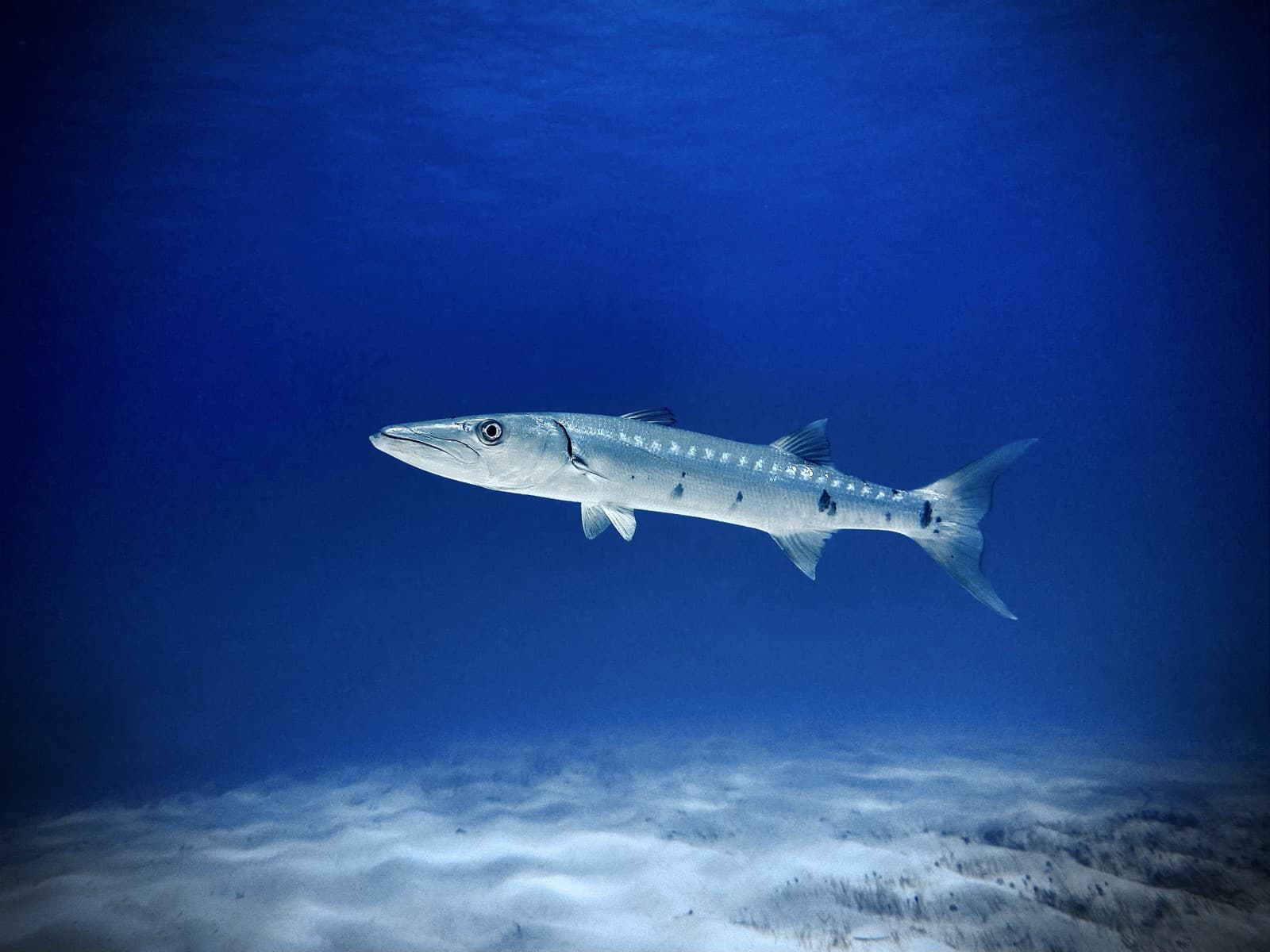
© Zepto / CC0
The great barracuda, with its torpedo-shaped body and fearsome array of razor-sharp teeth, represents the perfect blend of speed and precision hunting in coral reef environments. Their distinctive silvery scales and elongated form make them perfectly adapted for ambush attacks in clear tropical waters.
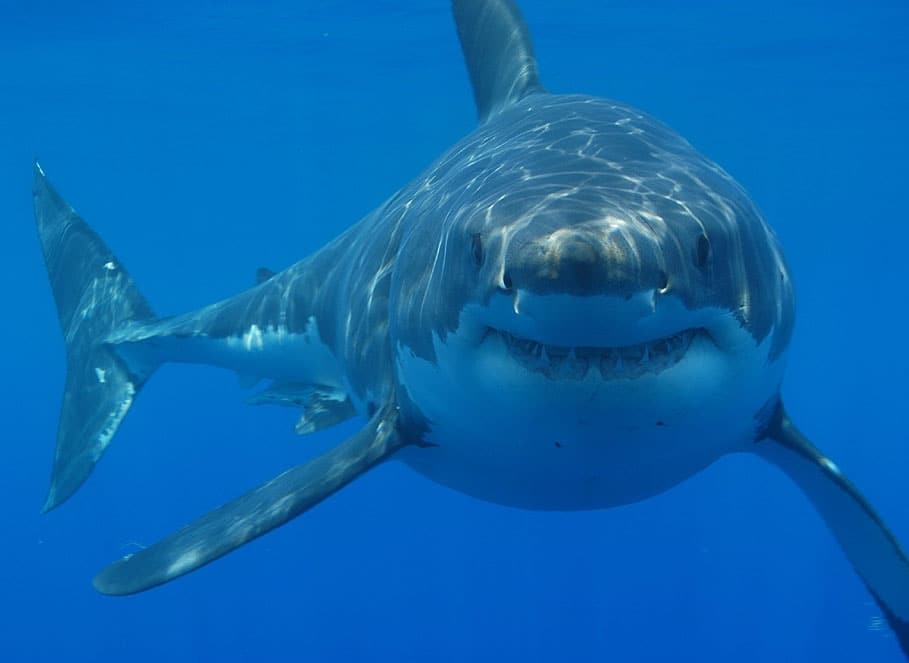
© Hermanus Backpackers / CC BY 2.0
The great white shark exemplifies raw power and sophisticated hunting ability, with its muscular frame and highly developed sensory systems. Their countershaded coloration and powerful build make them the ultimate oceanic predator.
Key Differences: Barracuda vs Shark
| Feature | Barracuda | Shark |
|---|---|---|
| Size | Up to 6.5 feet (2 m) | Up to 20+ feet (6+ m) depending on species |
| Skeleton | Bony fish | Cartilaginous |
| Lifespan | 14-15 years | 20-70 years depending on species |
| Hunting Style | Ambush predator | Varied: ambush, pursuit, or scavenging |
| Habitat | Tropical/subtropical waters | All ocean environments |
| Top Speed | 27 mph (43 km/h) | Up to 35 mph (56 km/h) |
Hunting Abilities and Tactics
Barracudas are renowned for their lightning-fast strikes, reaching speeds of 27 mph (43 km/h) in short bursts. They primarily rely on their excellent eyesight and reflective scales to ambush smaller fish in coral reef environments. Their distinctive fang-like teeth are designed for slicing prey into manageable pieces.
Sharks, particularly great whites, employ a more diverse range of hunting strategies. Their electromagnetic sensing organs (ampullae of Lorenzini) allow them to detect prey’s electrical impulses. Combined with their powerful sense of smell and ability to detect blood from great distances, sharks are equipped with multiple sophisticated hunting tools.
Habitat and Distribution
While barracudas are primarily found in tropical and subtropical waters around coral reefs, sharks have adapted to virtually every marine environment. From the frigid waters of the Arctic to tropical coral reefs, different shark species have evolved to thrive in specific niches within these diverse ecosystems.
Who Would Win in a Confrontation?
In a direct confrontation between a barracuda and a similarly-sized shark, the shark would likely prevail due to several advantages:
- Stronger bite force
- More robust skeletal structure
- Superior sensory capabilities
- Greater mass-to-length ratio
- More sophisticated hunting strategies
However, barracudas rarely encounter sharks as direct competitors due to their different preferred habitats and prey species.
Conservation Status and Human Interaction
Both species face significant challenges from human activities:
- Overfishing
- Habitat destruction
- Climate change impacts
- Bycatch in commercial fishing operations
While barracudas maintain relatively stable populations, many shark species face severe population declines, with some classified as endangered or critically endangered.
Evolutionary Adaptations
Sharks have maintained their basic body plan for over 450 million years, demonstrating the effectiveness of their design. Their cartilaginous skeleton provides flexibility and reduced weight, while their multiple rows of replaceable teeth ensure continuous hunting capability.
Barracudas, as teleost fish, represent a more recent evolutionary development. Their bony skeleton and swim bladder allow for precise control in the water column, making them perfectly adapted for their reef-hunting lifestyle.
Understanding these remarkable predators helps us appreciate the diversity of evolutionary solutions to marine hunting challenges, with each species perfectly adapted to its specific ecological niche.
